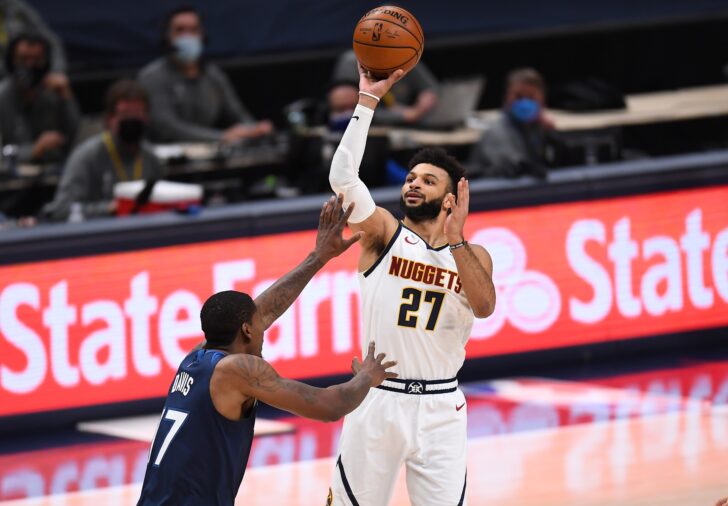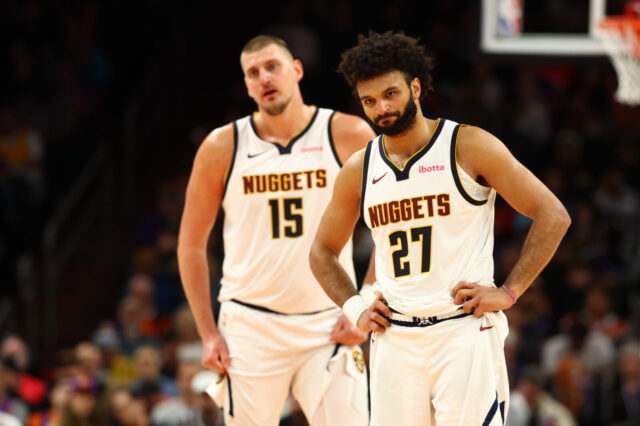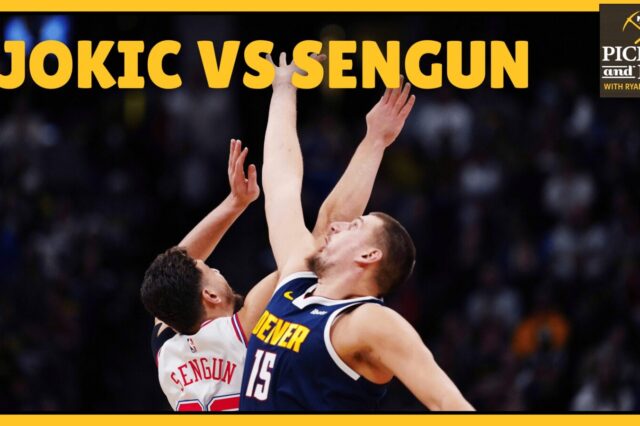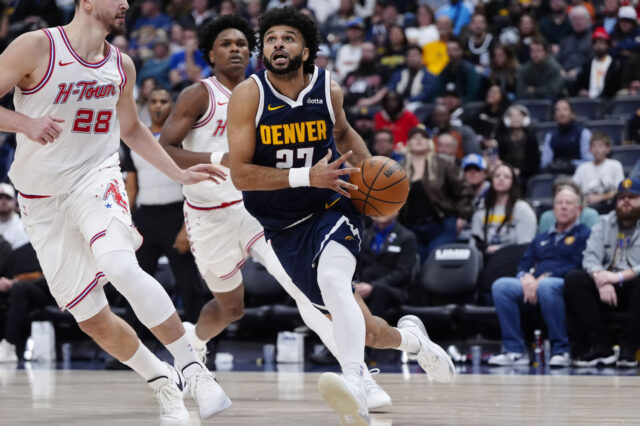One of the more fun discussions that Twitter and other circles have before every season is predicting the awards for the next season. I listened to countless podcasts banters about narrative and opportunity for players who might break out. As it pertains to the Most Improved Player award, Jamal Murray’s name was brought up pretty frequently. This discourse was brought upon naturally by his transcendent performance in the NBA bubble to close out the previous season.
Something that crossed my own mind when considering Murray as an MIP candidate was the question: Is he an 82-game player, or a 16 game player?
Simply, is Murray cut out for dominance night in and night out? Or does he only show up when the lights are brightest?
This question is fairly abstract, but the root of this question explains the season through eleven games so far from Murray. Really, the entire discussion around awards and all-star appearances is saturated in narrative. Hopefully, a different perspective can help digest where he stands at this point in the year.
As said before, many people expected Murray to continue his ridiculous bubble numbers into this season. So far, he’s improved his scoring by a marginal 1.8 points per game. His assists and rebounds have dipped by 0.8 and 0.4 respectively.
The per-game numbers are a bit skewed because of sample and don’t really show the improvement that Murray has made since last season.
The data for his three-point shooting hasn’t exactly stabilized yet for the sample size, though he’s at a respectable 35.8%. His True Shooting is almost exactly where it was last season.
For the rest of this detail, and really, the rest of the season, it’s vital to keep in mind two numbers for Murray: 3PAr and FTr
Each of these simply demonstrates how often a player takes three-point shots or draws fouls. Murray is consuming a much healthier diet of three-point shots this season, bumping his 3PAr from .368 to .413 (through 12 games). This became a topic of conversation early on in preseason when head coach Michael Malone emphasized three-point shots as vital to the Nuggets’ offense. This is an encouraging trend for Murray, especially when considering star guards like Damian Lillard, Steph Curry, and Kyle Lowry have been sitting well north of the .400 mark. While Murray may not reach their level, his willingness to take threes off of DHO’s and high Pick n’ Roll’s is important for him as an efficient scorer.
After this notable stat, Murray’s FTr also has taken a jump. This stat can be used to indicate a few things, but a lot of this one is about respect, in two parts. First, respect is required to demand additional defensive attention on a drive or a jump shot, and second, respect is required from the official to make the call. Murray climbed from a free throw rate of .207 last season to .250 at this point in time. This is significant and also another encouraging sign. Murray is commanding more respect league-wide.
Both of these numbers indicate that he has more room to expand as more of his shots fall. Speaking of which, Murray’s overall shooting numbers are a bit wonky, to say the least. His efficiency at the rim (0-3 feet per Basketball-Reference) is about 86.4% (!!!), a number between high-level big finishers Bam Adebayo and Giannis Antetokoumpo. This number is absurd, and probably won’t last for long, but it’s a testament to the touch that Murray has developed inside.
Unfortunately, he hasn’t leaned into this as much as he could. Last season, Murray took 18.8% of his shots from this area, but that number has taken a dive this season to about 11.2%. He has been relying more on threes (good), and long two’s (not as good).
Don’t get me wrong though, Murray is a good shooter from the mid-range, especially out of the pick and roll. But with finishing at the level that he has been, it’s hard not to question why he isn’t getting to the rim at the rate he normally does.
With Murray openly discussing a few injuries as nagging, this is probably at least a partial reason as to why he hasn’t attacked the rim as he has before. In the playoffs last season, he took over 20% of his shots from inside and still converted a very good 72% of them. He’s proven that he can take a healthy number of these shots and make them over a good-sized sample. The very clear problem facing Murray could be a health-related one.
Fortunately, this means that “Bubble Murray” is still in there somewhere, but it’s difficult to find that level when constantly banged up. Ultimately, based upon these numbers, it’s fairly easy to conclude that Murray’s efficiency will continue to rise as his health recovers, based upon his much-improved shot selection this season.
Watching the tape does also show flashes of moves that Murray utilized in the playoffs. His post-fade is excellent, and the balance that he showed in both the mid-range and around the rim is still a factor in his game.
Malone and the rest of the training staff are likely aware of the issues, so it is easier to have confidence in the fact that Murray will be able to recover by the time it matters. Hopefully the pending return of Michael Porter Jr is able to take a burden from Murray.



